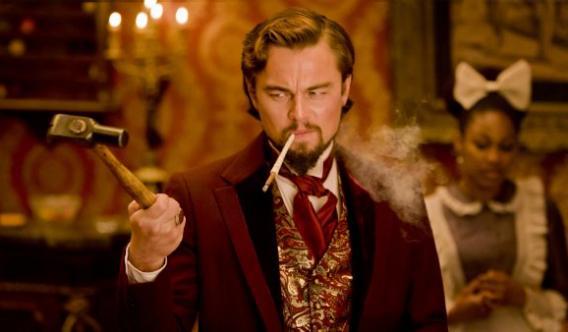Much of Django Unchained, Quentin Tarantino’s blaxploitation Western about an ex-slave’s revenge against plantation owners, centers on a practice called “Mandingo fighting.” Slaves are forced to fight to the death for their owners’ wealth and entertainment. Did the U.S. have anything like this form of gladiatorial combat?
No. While slaves could be called upon to perform for their owners with other forms of entertainment, such as singing and dancing, no slavery historian we spoke with had ever come across anything that closely resembled this human version of cock fighting. As David Blight, the director of Yale’s center for the study of slavery, told me: One reason slave owners wouldn’t have pitted their slaves against each other in such a way is strictly economic. Slavery was built upon money, and the fortune to be made for owners was in buying, selling, and working them, not in sending them out to fight at the risk of death.
While there’s no historical record of black gladiator fights in the U.S., this hasn’t stopped the sport from appearing again and again in popular culture. The 1975 blaxploitation film Mandingo, which Tarantino has cited as “one of [his] favorite movies,” is about a slave named Mede who is trained by his owner to fight to the death in bare-knuckle boxing against other slaves. That film was inspired by the book of the same name by dog-breeder-turned-novelist Kyle Onstott. (The term Mandingo itself comes from the name of a cultural and ethnic group in West Africa, who speak the Manding languages.) There is at least one other cinematic example of the fighting, in Mandingo’s sequel, Drum. (The scene starts at about 10:45 in the video below.)
Slaves were sometimes sent to fight for their owners; it just wasn’t to the death. Tom Molineaux was a Virginia slave who won his freedom—and, for his owner, $100,000—after winning a match against another slave. He went on to become the first black American to compete for the heavyweight championship when he fought the white champion Tom Cribb in England in 1810. (He lost.) According to Frederick Douglass, wrestling and boxing for sport, like festivals around holidays, were “among the most effective means in the hands of the slaveholder in keeping down the spirit of insurrection.”
It’s also true that, as embodied by the fictional “Mandingo fighting,” there has long been a fascination with the supposed physical prowess of the black body. The rise of prizefighting in the 19th century saw black men such as Peter Jackson and George Dixon making a show of their manliness to white and black audiences. Ralph Ellison’s “Battle Royal” scene in Invisible Man—in which the narrator must spar other black men in order to obtain a scholarship to a black college—uses a less sensationalistic approach to portray the fetishization of black men fighting. “This is a vital part of behavior patterns in the South, which both Negroes and whites thoughtlessly accept,” Ellison once said. “It is a ritual in preservation of caste lines, a keeping of taboo to appease the gods and ward off bad luck. It is also the initiation ritual to which all greenhorns are subjected.”
Thanks to David Blight of Yale University.
Previously
Conservatives Freak Out About Django Unchained
Spoiler Special: Django Unchained
Read the Script for Django Unchained
